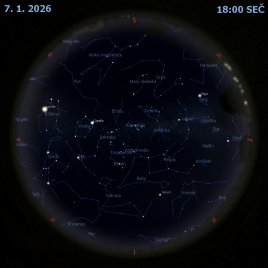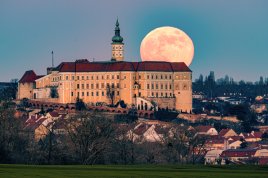Rentgenové prstence kolem gama vzplanutí

Uznání: NASA Swift Obs.; Data: B. Cenko (NASA's GSFC), A. Beardmore (U. Leicester) et al.; Processing: J. Miller (U. Michigan)
Proč by se měly kolem gama vzplanutí objevit rentgenové prstence? Překvapivá odpověď má málo co do činění s explozí samotnou, ale spíše se světlem odráženým z plynových oblastí plných prachu v naší vlastní Galaxii Mléčné dráze. GRB 221009A představuje obrovskou explozi, velice jasné gama vzplanutí (Gamma Ray Burst - GRB), které nastalo daleko přes celý vesmír a jehož záření do naší Sluneční soustavy minulý týden právě dorazilo. Jelikož GRB může také vyzařovat velkém množství rentgenového záření, tak jasné rentgenové vzplanutí dorazilo téměř zároveň s gama zářením. Rentgenové paprsky se v tomto případě také odrazily od oblastí s vysokým obsahem prachu zde v naší Galaxii Mléčné dráze a vytvořily tak neobvyklé reflexe. Čím větší je úhel mezi odrazivým prachem v Mléčné dráze a GRB, tím větší je poloměr rentgenových prstenců a typicky tím déle to světelným ozvěnám trvá.
Seznam odkazů v popisu
- APOD: 2003-07-21 IC 4603: Reflexní mlhovina v Hadonošovi
- NASA: The Milky Way Galaxy
- Wikipedia: GRB_221009A
- Wikipedia: Gamma-ray_burst
- NASA: GRB 221009A: Redshift from X-shooter/VLT
- NASA: Solar System
- QuantaMagazine.org: Brighter Than a Billion Billion Suns: Gamma-Ray Bursts Continue to Surprise
- NASA: X-Rays
- NASA: Gamma Rays
- NASA: Swift/XRT discovery of multiple dust-scattering X-ray rings around GRB 221009A
- AtlasOfTheUniverse.com: The Universe within 50000 Light Years - The Milky Way Galaxy
- APOD: 2020-02-24 Měsíční korona, halo a oblouky nad Manitobou
- KhanAcademy.org: Angular measure 1
- APOD: 2004-01-30 Expanze rentgenových prstenců od gama záblesku
- Wikipedia: Light_echo
NASA Official: Phillip Newman Specific rights apply. NASA Web Privacy Policy and Important Notices
A service of: ASD at NASA / GSFC & Michigan Tech. U.
Odkaz na originální APOD


